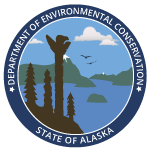Transportation Conformity
Transportation conformity is required by the Clean Air Act (CAA) Section 176(c) which ensures that Federal (FHWA/FTA) funding and approval are given to transportation (highway/transit) activities that are consistent with air quality goals. It is a link between Transportation and Air Quality planning ensuring that transportation improvement programs (TIPs) and Federal projects must conform to the purpose of the SIP.
- Cause or contribute to any new violations of the national ambient air quality standards (NAAQS)
- Increase the frequency of severity of NAAQS violations
- Delay timely attainment of the NAAQS or any required interim milestone
Transportation conformity only addresses air pollution from on-road mobile sources such as cars, trucks and transit in areas that are designated as nonattainment or maintenance for the following pollutants and their appropriate precursors:
- Ozone (O3);
- Particulate matter (PM10 and PM2.5);
- Nitrogen dioxide (NO2); and
- Carbon monoxide (CO)
Transportation activities subject to transportation conformity are:
- Metropolitan transportation plans
- Metropolitan transportation improvement programs (TIPs)
- Federal projects receiving FHWA/FTA funding or approvals
NB: Anchorage has completed its CO 20-year limited maintenance period. Hence, the requirements for a transportation conformity determination as provided in CAA section 176(c) and 40 CFR part 93 no longer apply to any federally funded transportation projects within Anchorage.
However, since the PM10 maintenance period for Eagle River and Juneau is still on until 2033, transportation conformity determination is required for federally funded transportation projects in Eagle River and Juneau maintenance areas until 2033. Also, despite the completion of the CO 20-year maintenance period in Fairbanks, transportation conformity determination is still required for federally funded transportation projects in the Fairbanks PM2.5 nonattainment area.

 Indicates an external site.
Indicates an external site.